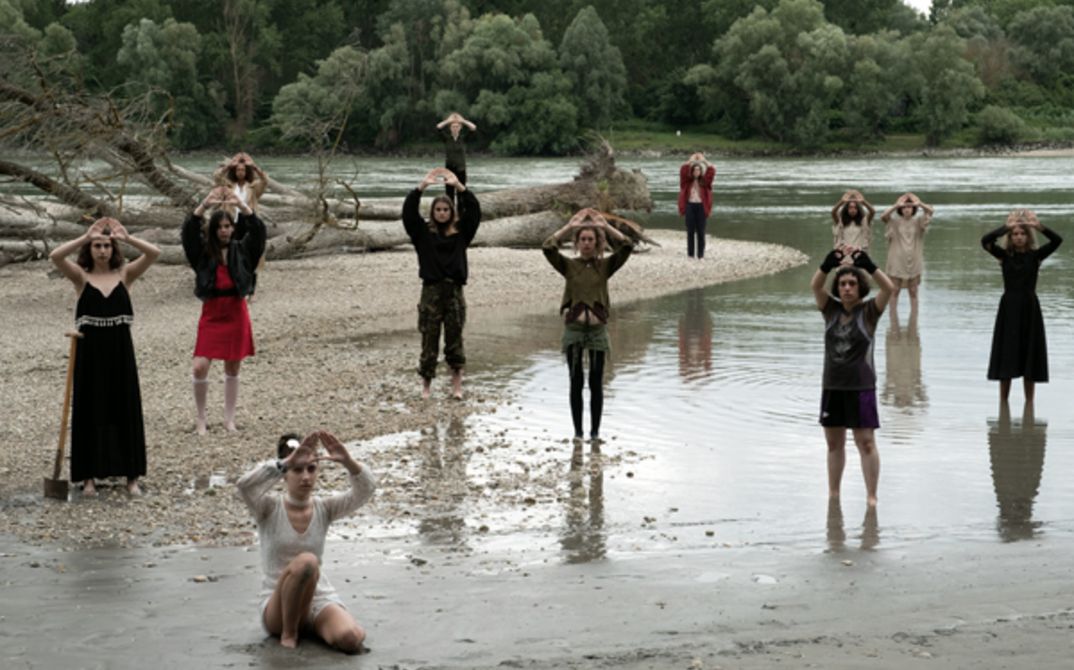Many of the films in the Forum’s first year explored the societal upheavals of the late 1960s. They include key feminist works, like San Fracisco Newsreel’s THE WOMAN’S FILM, which shows women in the US talking about their marriages, jobs, hopes and disappointments, and Helke Sander’s EINE PRÄMIE FÜR IRENE(A Bonus for Irene), which depicts the struggle for equality in a washing machine factory and on the way home at night. Documentaries such as THE MURDER OF FRED HAMPTON by Howard Alk and Mike Gray or ANGELA – PORTRAIT OF A REVOLUTIONARY by Yolande du Luart show solidarity with the civil rights movement in the US. Filmmaking itself became political at this time, with collectives such as the Groupe Medvedkine Sochaux (SOCHAUX: 11 JUIN 68), the already-mentioned Newsreel Group and the Colectivo intelectuales y trabajadores (EL CUARTO PODER) taking the place of the director. The historical program will be linked with a newer selection of films that connect the past and present, so that one can sense a leitmotif for the 50th Berlinale Forum. This is particularly true for the opening film EL TANGO DEL VIUDO Y SU ESPJO DEFORMANTE by Raúl Ruiz and Valeria Sarmiento. Ruiz shot the film in Chile in 1967, but was not able to finish it before 1973 when he was forced into exile. The film reels turned up years later in a Santiago basement and using an elaborate procedure, Ruiz’ widow Valeria Sarmiento, who is a film editor and director too, has been able to transform them into a finished product. The film plays with its own temporality in many ways: It encompasses the 50 years since it was made and has the narrative literally move forwards and backwards, establishing a meta-level in that motifs that characterized Ruiz’s later oeuvre can be seen in their incubation phase - long after they have reached maturity.
Other films that challenge perceptions of linearity in their conception of time include Constanze Ruhm’s GLI APPUNTI DI ANNA AZZORI / UNO SPECCHIO CHE VIAGGIA NEL TEMPO, which moves between the present and the early 1970s with tableau-esque re-enactments, a film set and archive material. The role of women in film production is the central question. The different levels of time gallop all over the place like boisterous foals in Paula Gaitán’s four-hour-long LUZ NOS TRÓPICOS: In the present, a young indigenous man travels by boat to a village in the Amazon region. In another era - some 150 years earlier - European settlers make a similar journey. Later, the time levels merge and 19th-century figures turn up in the present, while others from snowy New England nap on a bench in the Amazonian village. Time and place are only separated by one cut. LUZ NOS TRÓPICOS is a splendid tribute to the forests and rivers of north and south America, as well as to the indigenous peoples who live in and near them. This connects the film to others such as Viera Čákanyová’s FREM or Lois Patiño’s LÚA VERMELLA: They are all united by the fact that they explore the fragile relationship between humanity and nature. Other films, such as Clarissa Thieme’s WAS BLEIBT I STA OSTAJE I WHAT REMAINS / RE--VISITED, Radu Jude’s TIPOGRAFIC MAJUSCUL and Jonathan Perel’s RESPONSABILIDAD EMPRESARIAL – ask how political violence can be translated into film images. Jude opts for the method of re-enactment, taking up the case of a teenager who came into the sights of Romania’s Securitate in the 1980s. Perel uses static long shots of the factories of companies that supplied the military during Argentina’s dictatorship (1976-’83). A sober voiceover explains how trade union members were harassed in these places, and workers arrested and sometimes tortured, killed or “disappeared”.
The triptych OUVERTURES, which was shot by a collective, explores the legacy of the Haitian revolution and its leader Toussaint Louverture (1743–1803); it ends with a present that Louverture’s ghost refuses to let rest. For good reason, considering that just as the uprising of 1791 was a test case for Enlightenment ideals - what good is the idea that all people are brothers if slavery and colonialism exist? - today’s ideals regarding humanism and democracy are also riddled with contradictions. We should make way for the ghosts of Port-au-Prince so that they can help us to become aware of our own blind spots. (cn)
Reduced prices apply for Arsenal members for Forum and Forum Expanded screenings. Multiple screening tickets (only available at Arsenal) are also valid for all Forum and Forum Expanded screenings.



